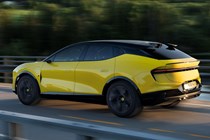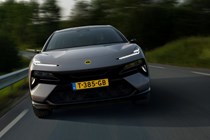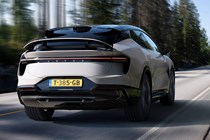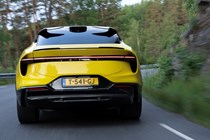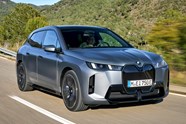
Lotus Eletre review
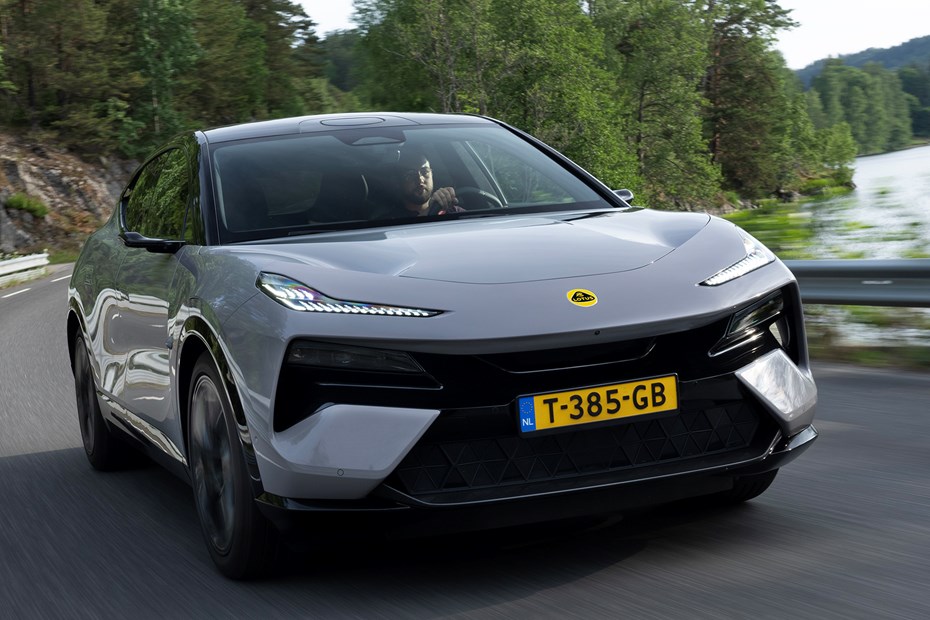
At a glance
| Price new | £86,240 - £146,740 |
|---|---|
| Used prices | £52,796 - £98,450 |
| Road tax cost | £620 |
| Insurance group | 50 |
Get an insurance quote with

|
|
| Fuel economy | 2.2 - 2.6 miles/kWh |
| Range | 280 - 373 miles |
| Miles per pound | 3.5 - 7.6 |
| Number of doors | 5 |
| View full specs for a specific version | |
Available fuel types
Fully electric
Pros & cons
- Addictive mid-range acceleration
- Responsive brakes and steering
- Less expensive than German rivals
- It's huge and weighty
- Some infotainment glitches
- Lotus traditionalists will hate it
Lotus Eletre SUV rivals
Overview
What we have here is Lotus’s pitch at building the best electric car. That’s quite a turnaround. Remember when Lotus stood for lightweight sports cars bought by die-hard enthusiasts? Those days are gone, and we’re in a new world, where the now-Chinese-owned company is chasing sales and profit. That’s where its latest product – the battery-powered, SUV-shaped, premium-priced Eletre comes in.
It is a million miles away from the Elise. It’s described as a hyper-SUV, and with a maximum power output of between 611 and 918hp (yes, really) that sounds fair to us. It will be joined by a sleek saloon version, and a smaller SUV later, and followed after that by a smaller, lighter electric sports car. Phew.
It’s longer, wider and heavier than a Mercedes-Benz S-Class, and both flavours of Eletre carry a gargantuan 109kWh battery pack. Despite it being pitched at a rapidly growing market, there aren’t many direct rivals for the Eletre, as it’s been designed as an electric SUV to deliver thrills. The BMW iX and Mercedes-AMG EQE are the closest in concept – although the Lamborghini Urus and Audi SQ8 will give it a run for its money if petrol is your thing.
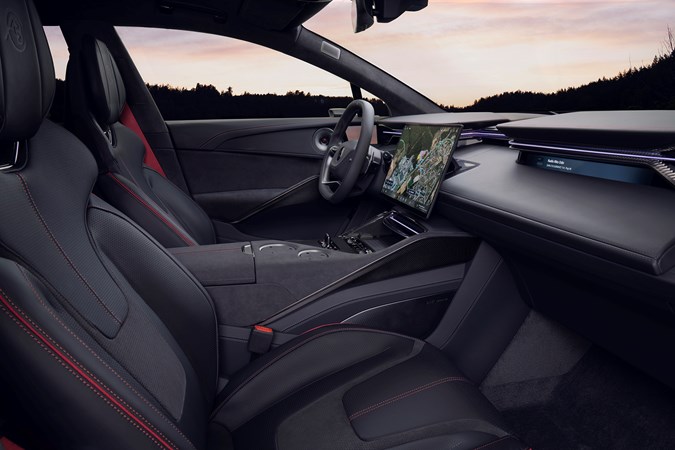
What’s it like inside?
This is like no Lotus before it, and that’s largely a good thing. Fit-and-finish deserves a firm thumbs-up, the materials are positively premium, and the equipment is generous. The infotainment system is dubbed Hyper OS, and it’s rather good.
You get the usual multi-functional steering wheel, the head-up display and the large centre touchscreen, but there’s also an iPad-type control panel for the rear passengers. Up front, the driver instrument monitor is mirrored on the passenger side.
it’s not perfect – the voice control is flawed, the lack of haptic or audio feedback of touchscreen inputs is annoying, the small graphics and the even smaller on-screen controls could do with magnifying proximity sensors. The toggles on the steering wheel are too flimsy, but on the positive side, the KEF in-car entertainment and Dolby Atmos sound system is highly impressive.
In terms of accommodation, it does well – rear legroom in particular benefits from the engineless packaging, and the boot of the standard five-seater holds a cavernous 688 litres, not counting the useful 46-litre front cubicle.
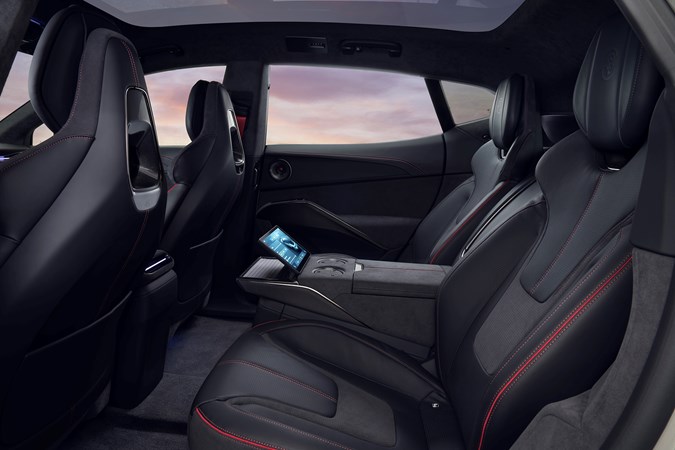
Range and charging
Common to all variants is the 800-volt charging system, a 112kWh lithium-ion battery and the ability to jump from 10-80% in 20 minutes flat when connected to a 350kW public rapid charger. While the entry-level models boast a maximum range of 373 miles when driven with self-restraint, the R when driven similarly will go a more modest 304 miles.
What’s it like to drive?
We’ve only driven the Eletre S so far, but can conclude that it’s much more fun in a straight-line than its Mercedes-AMG and BMW rivals. But you can’t disguise its weight – and even though its centre of gravity is low, you’re always aware of its great weight in bends.
It was never going to feel like an Elise. But does it at least feel like the Lotus? Yes and no. No, because even in Track mode and on wet turf this is a perfectly safe, controllable and confidence-inspiring piece of kit. It tracks through corners safely, and won’t let you down. Yes, because the steering feel is excellent, the brakes have instant feedback and progressive action. It’s a fuss-free precision tool, and highly impressive.
The regenerative braking is adjustable, as you’d expect. While the left paddle lets you choose the preferred regen level, the right paddle scrolls through the drive modes labelled Tour, Range, Sport, Off-Road, Individual and Track (R only).
In terms of drive modes, it’s configurable, and we found the best compromise was to lock everything in Sport bar the suspension, which is best left in Tour for more compliance. Last word goes to its speed – after storming down a runway we reach a momentary top speed of 155mph in the blink of an eye, the truly ballistic 50-75mph acceleration in just under two seconds is even more mind boggling.
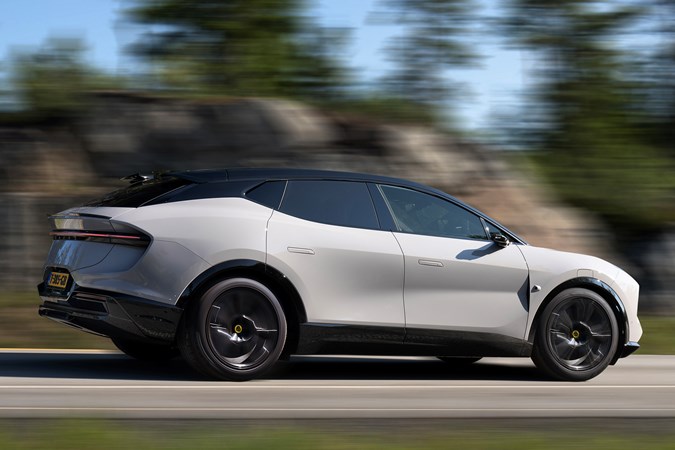
What models and trims are available?
There are three Eletres to choose from. The base model and the S share the single-speed, dual-motor drivetrain rated at 611hp. They can sprint 0-62mph in 4.5sec and max out at 160mph. The 165mph R version puts 918hp through a two-speed transmission. The claimed 0-62mph time is 3.0 seconds.
The S adds mainly nice-to-have but by no means mandatory luxury items like soft-close doors, 2,160-watt 23-speaker KEF audio system, active rear spoiler and fancier wheels for a generous premium.
On top of this, the R features active anti-roll bars and rear-wheel steering together with shaved performance tyres and the lairier Track mode. Air springs with continuous damping control, matrix LED headlights and head-up display are standard on all versions.
So, it’s big, clever and really rather entertaining. But would we recommend buying one? Read on to find out.



